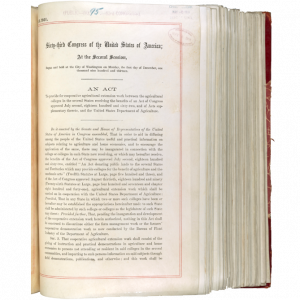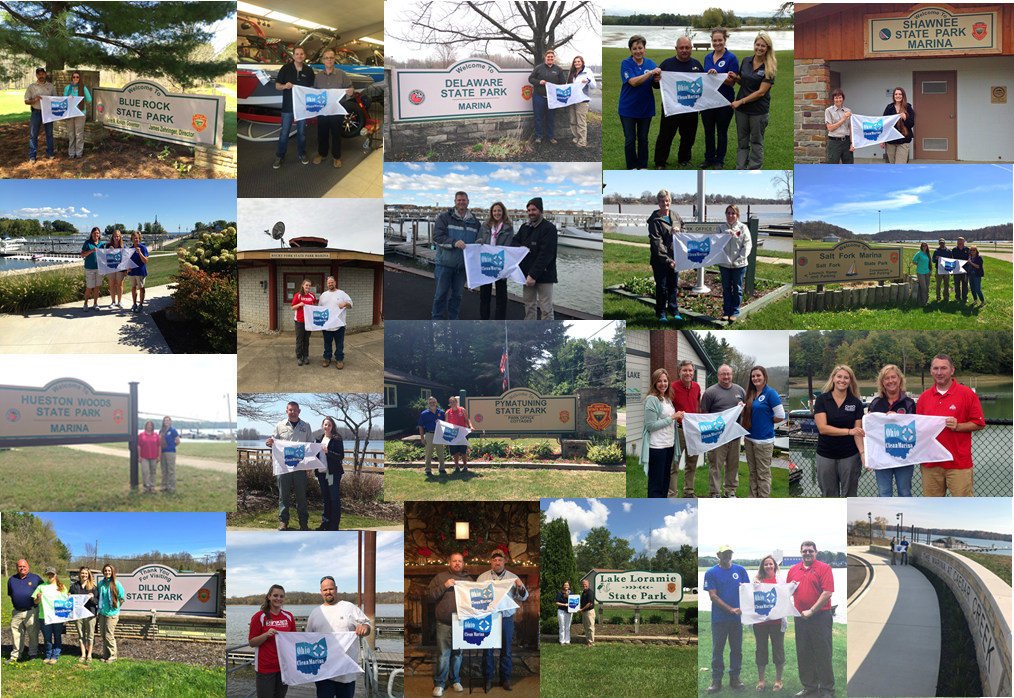When trying something new we’ve not done before, it doesn’t take us long to realize that proficiency requires a dedication to practice and in most cases a good bit of patience. And, you might say that Extension professionals work in teams all the time. It is not often, however, that we work together in national conference planning.

Logo photo courtesy of: ThisisCleveland.com and Larry E. Highbaugh, Jr.
CD professionals have been practicing teamwork and leadership skills around a singular focus since June 2014. That’s when the idea of hosting the annual conference for our professional association, the National Association of Community Development Extension Professionals (a.k.a. NACDEP), was first shared. After learning of our proposal’s success about 18 months later, even more opportunities to practice really kicked. For example, as a team, we have:
- Participated in the past three NACDEP conferences like never before (i.e., ‘What does it take to put this on?’)
- Encouraged colleagues to serve on the national NACDEP board (thank you, Nancy Bowen, treasurer; David Civittolo, president-elect; and Brian Raison, north central representative)
- Served on a variety of prior NACDEP conference sub-committees
- Worked together to identify our conference location (Cleveland) and venue (Renaissance Cleveland Hotel – Downtown)
- Brainstormed and investigated the best things to experience in Cleveland

Exploring a potential conference MLW site: Edgewater Park
With Ohio JCEP’s support, a couple of weeks ago we were able to practice our teamwork and leadership skills in a face-to-face retreat at the conference venue in Cleveland. During this two-day retreat, we:
- Investigated potential conference mobile learning workshop (MLW) ideas in small groups
- Explored the conference hotel and surrounding areas
- Continued our subcommittee work focused on sessions, speakers, sponsorship, publicity, hospitality, MLWs, etc.
This work required our best leadership and teamwork by subcommittee chairs and co-chairs, MLW investigation leaders, and situational leaders too. Even better, we were able to team up with members of the national NACDEP board in this work as they overlapped their annual face-to-face retreat with our conference planning retreat at the 2018 NACDEP Conference venue in Cleveland.
No doubt, there has been much to learn throughout this conference planning process. And when we consciously make the time for it, there is much to learn beyond the ins and outs of how to produce a top-rate NACDEP conference. Every day we have countless opportunities to actively and deliberately practice our skills necessary for working with others. Opportunities to strengthen our skills and build proficiency. The work that lies ahead will require our best teamwork and leadership.
Regardless of the task at hand or the challenge you face, how you go about practicing your skills is up to you.
Let’s ‘suit up!’
Greg Davis is a 2018 NACDEP Conference planning committee co-chair and Extension Assistant Director, Community Development.




 To educate this audience, posters (Ag in the Community) were created with facts from United States Department of Agriculture statistics, county statistics and various commodity organizations. Each poster has a QR code or barcode, which may be scanned with a smart device, linked to an online blog page for data collection. Posters were color printed on 11”x 17” paper and laminated before being displayed around the fairgrounds at designated locations.
To educate this audience, posters (Ag in the Community) were created with facts from United States Department of Agriculture statistics, county statistics and various commodity organizations. Each poster has a QR code or barcode, which may be scanned with a smart device, linked to an online blog page for data collection. Posters were color printed on 11”x 17” paper and laminated before being displayed around the fairgrounds at designated locations. There were approximately 65,000 people who attended the 2016 Clermont County Fair who could have viewed the educational materials. We know that 376 fair-goers viewed the posters via the QR code. Results from the 2017 Ag in the Community posters are pending.
There were approximately 65,000 people who attended the 2016 Clermont County Fair who could have viewed the educational materials. We know that 376 fair-goers viewed the posters via the QR code. Results from the 2017 Ag in the Community posters are pending. Through the Agriculture in the Community poster program, we were able to collaborate in educating the public on agriculture and their community. Reach out to other Extension program staff in your office today to collaborate in this one simple way.
Through the Agriculture in the Community poster program, we were able to collaborate in educating the public on agriculture and their community. Reach out to other Extension program staff in your office today to collaborate in this one simple way.



 I have the best job in the world. As an extension educator for Ohio Sea Grant and OSU Extension, my job is to help communicate science in an easy-to-understand way to the public. When I started in this role, this was done mostly through in person meetings, phone calls, emails, and within educational settings such as outreach events. I still continue to communicate with the public and my stakeholders through these outlets, but I have added a new approach for reaching others to this list: social media.
I have the best job in the world. As an extension educator for Ohio Sea Grant and OSU Extension, my job is to help communicate science in an easy-to-understand way to the public. When I started in this role, this was done mostly through in person meetings, phone calls, emails, and within educational settings such as outreach events. I still continue to communicate with the public and my stakeholders through these outlets, but I have added a new approach for reaching others to this list: social media.


 The continued excellence of OSU Extension professionals was formally acknowledged by JCEP/ESP awards for scholarships, team teaching and creative works; ESP chapter and regional awards; CES and national association awards; and awards for service. Our very own Raymond A. Schindler Excellence in Community Development Award was bestowed upon
The continued excellence of OSU Extension professionals was formally acknowledged by JCEP/ESP awards for scholarships, team teaching and creative works; ESP chapter and regional awards; CES and national association awards; and awards for service. Our very own Raymond A. Schindler Excellence in Community Development Award was bestowed upon 